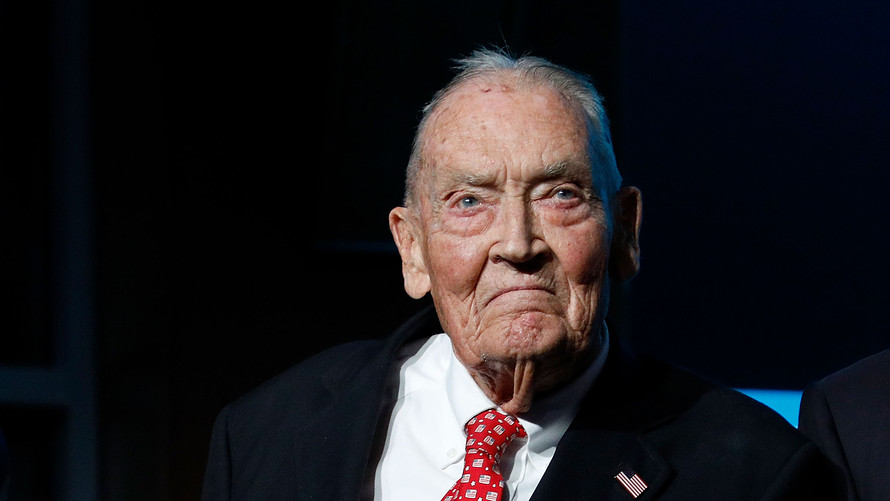[ad_1]
[Editor’s Note: The following originally appeared on FactSet.com. Elisabeth Kashner is director of ETF research and analytics for FactSet.]
Jack Bogle, Vanguard founder and the father of low-cost index investing, famously declared, “In investing, you get what you don’t pay for.” Bogle championed low cost and simplicity, endearing him to investors and revolutionizing the asset management industry.
Since his passing this month at the age of 89, he has been widely celebrated for his contributions to the investment industry.
However, the finest celebration of Jack’s life work can be found in the increased size of investor returns, reflected in the historical decrease in investment management fees paid. Investors have been paying silent tribute to Jack Bogle for years, by flocking to cheap, broad-based, simple index funds.
We can celebrate Jack Bogle’s life by the numbers, by measuring the decline in investment fees and the rise of Vanguard-style investing across the ETF industry. 2018 was a banner year for the trends Jack Bogle set in motion.
2018 showed that, once again, low cost and high efficiency are winning investors’ hearts, minds, and wallets, while expensive, inefficient products are losing out. Winners are cheap ETFs, while losers include active mutual funds, many hedge funds, and even expensive ETFs.
Asset managers continue to slash expense ratios, while investors pile into low-cost funds and shun expensive ones.
Race To Zero
Fee compression, also known as “the fee war,” continued at a rapid pace in 2018. ETF issuers continue to cut fees as clients seek ever-cheaper options. Fidelity’s 0.00% fee mutual funds grabbed headlines—and some $2.6 billion in assets—by winning the race to zero.
The ETF price tag keeps falling. What was cheap in 2017 looked a bit rich in 2018, as the threshold for attractive pricing continued to drop. As investors rewarded low expense ratios, asset managers played catchup by cutting fees.
FactSet documented 283 fee cuts among U.S.-domiciled ETFs, excluding geared funds. That’s 13.5% of the universe, by count. While many cuts were minor, some were quite dramatic, as depicted in the chart below.

Cheap Thrashes Expensive
Investors rewarded cheapness and punished high-cost funds. The iShares Core MSCI EAFE ETF (IEFA) was 2018’s No. 1 ETF by inflows. Its cannibalization of its higher-priced sister fund, the iShares MSCI EAFE (EFA), provides a perfect example of the ETF price war in action.
In 2018, 77 U.S.-domiciled funds competed in the developed ex-U.S. equity total market segment. Four funds dominated the segment, with 81% of segment assets at the start of 2018. Three of the four are competitively priced, at 0.06% to 0.08%. Still, at the beginning of 2018, EFA dominated the segment, despite its annual cost of 0.31%. That domination ended in 2018.
IEFA, the Vanguard FTSE Developed Markets ETF (VEA), and the Schwab International Equity ETF (SCHF) toppled EFA, taking in $34.68 billion, while EFA suffered $10.63 billion in net redemptions.
2018 Market Share Changes & Expense Ratios, Top 4 Developed-Market Ex-US ETFs

With a 0.31% expense ratio, EFA can no longer compete with rivals charging 0.06%, 0.07% or 0.08%.
[ad_2]
Source link

